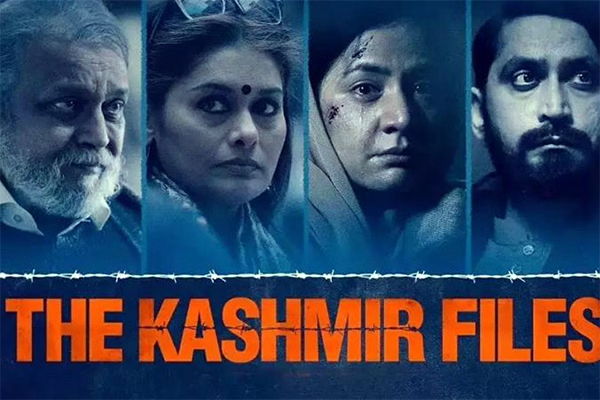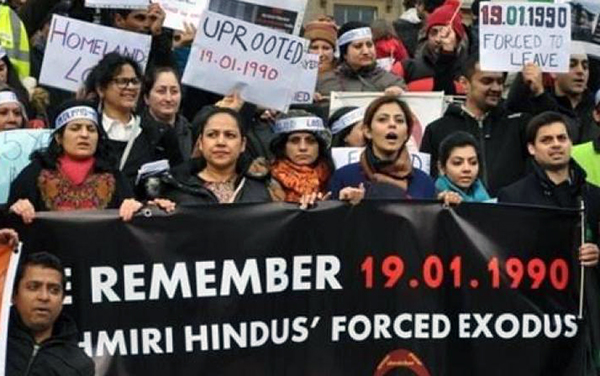

Did the Army Fail to See the Killings and Exodus?
The Defence Services, especially the Army, are rightly considered the “instruments of last resort” of any nation. While the Defence Services primarily exist for safeguarding the territorial integrity of a nation and, while each nation has specific civil organs to deal with every facet of administration, emergencies and calamities, it is the Defence Services that the nation turns to if its primary services fail. Any essential service of the government, be it railways, power supply, water supply, etc, may go on strike but the Defence Services ensure these essential services continue to work till the government resolves the problem administratively. During natural or manmade calamities, the Defence Services shore up the resources of National Disaster Response Force (NDRF), fire department, medical services, et al. A flag march by the army in a riot-torn area instils confidence among the masses. In short, a nation looks up to its Defence Services with hope and assurance and feels secure.
The recently released movie, “The Kashmir Files”, on the January 1990 genocide and consequent exodus of Hindus from the Kashmir Valley, has churned the nation’s conscience and awakened Indians to the long-forgotten plight of “Kashmiri Pandits” and the systemic denial of justice and compensation to them for over three decades. Most movie audiences were shocked about the secrecy ensured around this carnage that prevented its coverage in the news. The lack of news about massacre of hundreds, rape and torture of thousands and eviction of lakhs of Hindus is astounding and mind-numbing. While the Internet and social media was nascent at that time, these events were not covered by any newspaper or TV news channel. The magnitude and complicity of the number of agencies involved in this cover-up is monumental. India has always had a free press, except during Indira Gandhi’s Emergency period. The perpetrators of this genocide evidently had friends in high places and connections in low places to effectively muzzle the Fourth Estate.
“A fraudulent intent, howsoever carefully concealed at the outset, will ultimately betray itself.”
– Titus Livius
Doubtless, the plot was hatched at a political level and abetted and supported at the administrative level from Srinagar to New Delhi. One has to applaud the planners for the astuteness that ensured not only the success of their diabolical plan, it also ensured the availability of fall-guys on whom fingers could be pointed. The actual culprits not only escaped scrutiny, they were lauded by prime minister Manmohan Singh and interviewed by pro-establishment TV channels as heroes. The genocide and exodus were painted as a self-induced “migration” of Hindus from the Valley, disillusioned by lack of work opportunity in Kashmir. The fact that they left their homes with only the clothes on their back was never highlighted.


First, the date of the operation was decided (January 1990) and then the chess pieces were put into place. The strategy was to execute the plan in such a way that the real culprits had strong alibis while innocent incumbents were blamed for the carnage. The initial planning seems to have started in late 1986, when Farooq Abdullah became the chief minister and his dear friend Rajiv Gandhi was the prime minister. The idea was to rid Kashmir Valley of Hindus, called Kashmiri Pandits, secretly without the outside world getting wind of it. Gagging the spineless and career-minded IAS, IPS and state police was no problem. The press, most of whom had received their licences during the Congress raj and so owed their allegiance to the Gandhi family, seemed to have agreed to turn a blind eye.
It was necessary to have absolute loyalists in critical positions for the success of the heinous plan. PV Narsimha Rao was replaced by Buta Singh as home minister. It was Buta Singh, along with Zail Singh, who had proposed the name of Rajiv Gandhi to succeed Indira Gandhi as prime minister, despite Operation Bluestar and the gruesome genocide of the Sikhs. So, they were proven loyalists.
Just before D Day, 19 January 1990, the mastermind, Farooq Abdullah, resigned as chief minister and Governor’s Rule was imposed with an unsuspecting Jagmohan installed to take the blame. It is interesting to note that Governor’s Rule was imposed for six months during the crucial period of the genocide and once the dust had settled, President’s Rule was imposed for six years from Jul 1990 to Oct 1996 to safeguard Congress leadership from any blame.
The other chess pieces who were juggled around make for an intriguing study. MK Narayan, a staunch loyalist was Intelligence Bureau (IB) Director from Apr 1987 to Feb 1992 but was replaced by a nondescript RP Joshi from Jan 1990 to Dec 1990. CBI Directors are never appointed for short periods but one R Sekhar was made CBI Director from 11 Jan 1990 to 14 Feb 1990. Another loyalist, Ved Marwah, was placed as DG National Security Guard, just in case.
Though VP Singh was the prime minister during 1990, the home minister was Mufti Mohammed Sayeed (Dec 1989 – Nov 1990), the only time in India’s history a Muslim has been a home minister. It was during this time that abduction of Rubaiya Sayeed, his daughter, was craftily stage-managed on 8 Dec 1989 to extract release of five deadly terrorists, on 13 Dec 1989. These terrorists were essential to execute the planned Hindu genocide in Jan 1990. In this drama, Farooq Abdullah pretended as “opposing” the release of terrorists to further absolve him of any mal-intent.
Jan 1990 saw (or rather did not see) the world’s worst genocide and eviction based on religion, after the holocaust of the European Jews during World War II, when hundreds were killed, thousands were raped and lakhs were evicted from their homeland of Kashmir, merely because they were Hindus. The stark truth of this massacre would have remained a secret but for Vivek Agnihotri’s film The Kashmir Files. The fallout of this watershed movie is obvious in India.
What about the instrument of last resort – the Army – in all this tragedy? The Army has a fairly dense presence in Jammu & Kashmir. Unlike army units in other locations on Indian borders, the units of XV Corps, Srinagar, are actively fighting infiltration and terrorism even today. The situation in the 1980s and 1990s was far worse and the army was not only defending the borders, it was very alert against attacks on itself as well as on innocent civilians from anti-national elements. There was and continues to exist a wide network of intelligence units and informers keeping a sharp eye on terrorist organisations and their activities. Even if cooperation from civil intelligence agencies to the army was withheld, the Army could not have been totally unaware of loudspeaker announcements from mosques, asking Hindus to convert, flee or be killed; of infiltration of high-end automatic weapons for the jihadists; of marking of Hindu houses; of sporadic killing, rape and eviction of Hindus. Surely the Army does not rely on TV news and newspapers for such information in their area of responsibility. The jihadists must be using walkie-talkies and other radio equipment for communication, which could be intercepted. Situation reports (Sitreps) are initiated by all sub-units that report all unusual activity. In short, the genocide could not have gone unnoticed by the Army, especially since four officers of the IAF were brazenly killed in broad daylight by Yasin Malik, a prominent figure on TV news channels.
It raises the obvious question – Was the Army also complicit in this deplorable act? Circumstantial evidence certainly points to this horrifying conclusion. While his complicity is highly conjectural, it is crucial to note that Lt Gen Mohammed Ahmed Zaki was positioned as the tactical commander in charge of the Valley, as GOC of XV Corps from Oct 1989 to Jun 1991. It was up to him to accept or discard intelligence inputs and to furnish relevant information to HQ Northern Command. It is inconceivable that the GOC of XV Corps was not aware of the happenings in the Valley. Was Zaki also one of the chess pieces put in place for the success of the “operation”? The author contacted Lt Gen Zaki for his comments, but the retired general refused to offer any.
Indeed, Indian Army is irreligious and there are any number of Muslims who have laid down their life for defence of India. Alas, it is equally true that some senior officers have traded military secrets or otherwise betrayed India for personal benefit. “All soldiers are patriotic” is as much an axiomatic myth as “all teachers are knowledgeable” and “all doctors are caring”. Even if, for sake of argument, one deems Zaki as compromised, being a Muslim, what did the other senior officers do about it?
GOC of 19 Infantry Division, Commander of 31 Sub Area, officers in military intelligence sections at all levels, commanders of subordinate formations and units located in hotspots like Srinagar, Awantipora, Sopore, Kupwara, Pulwama, Doda, Poonch, Anantnag, etc, all seem to have failed in their national duty. Of course, safety of citizens in peacetime is primarily a police responsibility, it cannot absolve the local army units of inaction when racial cleansing of some scale was being done in their den.
“There is something drastically wrong with one`s character if opportunity controls one’s loyalty.”- Bhavna Arora
















